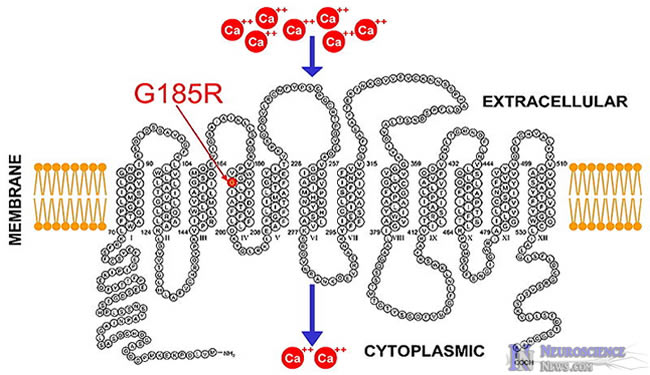Computational neuroscience research provides new information on the N-type calcium channel and synaptic transmission. The computational neuroscience model investigated shows that a single open N-type calcium channel’s current may be sufficient to enable neurotransmitter release.
This information could be extremely important for understanding synaptic transmission, synaptic plasticity and nervous system processing better.
NJIT math professor illuminates cellular basis of neural impulse transmission
NJIT Associate Professor Victor Matveev, PhD, in the department of mathematical sciences, was part of a research team that published “N-type Ca2+ channels carry the largest current: Implications for nanodomains and transmitter release,” in Nature Neuroscience on Oct. 17, 2010. http://www.nature.com/neuro/journal/v13/n11/abs/nn.2657.html
Leading the project, Elise Stanley, PhD, a senior scientist at the Toronto Western Research Institute, said that Matveev’s mathematical modeling showed that calcium influx through a single N-type calcium channel is sufficient to trigger the fusion of a secretory vesicle located 25 nm from the channel.
Explained Stanley: “These findings may help to explain why nature evolved this new family of channels, permitting an efficient transmitter release mechanism with a modular molecular organization. Our next objective will be to determine how this exquisitely organized ‘molecular machine’ plays a role in synaptic modulation which is critical for memory and behavior modification.” Since transmitter release is involved in virtually every aspect of nervous system function, these results have a broad impact for the understanding of normal brain processing and central and peripheral nervous system disorders.
The results of this work showed that the calcium current through an N-type channel was larger in comparison to calcium channels that are not involved in synaptic transmission, contrary to the currently accepted channel conductance hierarchy.
Furthermore, the authors’ modeling work showed that the current through a single open N-type calcium channel may be sufficient to enable neurotransmitter release. These results demonstrate the degree to which N-type calcium channel properties are adapted for their role in synaptic transmission, and also shed light on the highly localized nature of intra-synaptic calcium signaling.
Matveev’s research focuses on computational neuroscience, primarily on biophysical modeling and numerical simulations of synaptic function and its mechanisms. He uses analytical methods and computational techniques, from stochastic modeling to numerical solution of partial and ordinary differential equations.
Matveev collaborates with experimental neurophysiologists, and develops models to explain and fit the experimental data. His current projects include the study of the mechanisms of short-term synaptic facilitation and other calcium-dependent processes involved in neurotransmitter secretion, and the modeling of presynaptic calcium diffusion and buffering.
To facilitate his research, Matveev also has been working on the development of a software application designed for solving the reaction-diffusion equation arising in the study of intracellular calcium dynamics (“Calcium Calculator”).
Contact: Sheryl Weinstein
Source: New Jersey Institute of Technology Press Release









